As the hobby moves toward more scale-like fidelity, there are still operators who want a nice-looking model, but don’t necessarily want or need all the latest bells, whistles, and doodads.
Since the demise of K-Line, that void has been filled in part by Ready Made Trains by Aristo-Craft. RMT has become expert at taking older tooling, sprucing it up, adding interesting road names, and catering to folks who want to run trains, not go over them with a digital micrometer to check for scale accuracy.
The RMT Alco’s heritage goes back to the 1950s and Louis Marx & Co., which fielded this model. The tooling was acquired by K-Line, which used it to some good effect, most notably with a 1990 series of custom-run sets made for Procter & Gamble. They offered customized train sets to many of the firm’s client regional food store chains, and this may be the single most interesting series of locomotives K-Line made.
For a peek at the K-Line version, subscribers can check out “Meet K-Line’s Mighty Midget” from the May 1995 issue of Classic Toy Trains by going to ClassicToyTrains.com and clicking on “Subscriber Extras” and then on “Recent reviews.”
Opening the box
Well, RMT has dusted off the Marx tooling, made some nice changes to the electronics, and is offering this under the novelty name, “The Bang.” I own a K-Line New York Central version, circa 1991, and I was eager to note the differences between the two models.
The most obvious difference is the pilot. While both have a stamped-steel frame, the RMT version has slightly wider steps and is finished in a glossy black. The older version has handrails that are stamped metal, but RMT added nicer, more finely made wire handrails accented in red for the front stanchions and white for the railings. The new version has handrails leading to the cab.
The cab door on the K-Line version is solid. The RMT model has a window with glass. Neither cab has an interior, but the RMT Alco has two crew figures, facing toward the long-hood front.
Considering the humble origins of the tooling, I would say there is a satisfactory level of cast-in detail on the shell. The side hatches are raised out of the plastic, and there are raised louvers and what I guess are supposed to be latches. There are cast-in steps on the side and the end of the shell.
RMT has added a very nice simulated horn and an Alco-style switcher exhaust stack. There is a bell, as well. My older K-Line model was probably supposed to have a bell, but it wasn’t mounted and wasn’t in the box when I bought it. My model has the standard straight exhaust stack.
In the super-bonus department, there is a flashing rooftop strobe on the RMT version that the original Marx and subsequent K-Line models lacked.
Regardless of which firm made the model, the esthetic weak point is the fuel tank. On both engines there is just a thin, flat façade screwed to the metal frame. So long as you don’t grab it with a kung-fu death-grip, you should be able to avoid breakage.
The candy apple red of the body is evenly applied, and the lettering application is great.
There are some nifty nomenclature items, such as “Fuel,” “Water,” “Danger 660 Volts,” “Watch Your Step,” and “F” (for front) scattered about the frame and body. I actually laughed out loud when I read what appears to be an Alco builder’s plate that reads: “Ready Made Trains Locomotive Company Bang S-4 diesel, Bloomsbury Works 2010.”
On the test track
The O gauge model has two can-style motors and four traction tires mounted on alternating wheels. The locomotive was responsive and ran smoothly in all speed ranges.
I had forgotten what a rocket the older K-Line Alco was. I ran both diesels simultaneously on the test track, one opposite the other on the loop. Within one lap the K-Line model had caught up with the RMT model and was actually pushing it. Suffice it to say the RMT version had better – more prototypical – low-speed performance.
The low-speed average for the RMT was 15.1 scale miles per hour, and the K-Line’s was 27.1 scale miles per hour. The high-speed average for both the RMT and K-Line units was 91 scale miles per hour. My criterion for this measurement was simply “as fast as it would go without flying off the track.”
In other words, the moment when it started to lean out on the curve was when I clicked the stopwatch. I was surprised to find that while the RMT version was 12 scale miles per hour slower than the vintage K-Line locomotive, both scored 91 on the high end.
Drawbar pull for the RMT was 9.2 ounces, while the old K-Line was 3.6 ounces.
In operation, the old K-Line product was noisier, wobbled more, and was not at all smooth in the lower-speed ranges. Operation, of course, was conventional-mode only.
There is a switch controlling forward-only or forward-neutral-reverse on the underside of the frame.
The truck side frames are plastic, but the knuckle coupler and shaft are metal. They are thumbtack-style operating couplers. Each truck has two power pickup rollers with an overall footprint of 7½ inches.
The RMT model has directional lighting, which I had expected to just be the headlight changing directions, but no. The headlight illuminates in the direction of travel, and red markers illuminate on the opposite end of the switcher. The rooftop strobe was a bit dim in normal lighting, but it is a nice visual bonus.
The horn fills the bill for O gauge grade-crossing alerts.
The Alco S-2 from Ready Made Trains is a nicely executed update of a classic from the Marx and K-Line eras. The horn and directional light are value-added features, and the graphics are outstanding. This would be a great second locomotive for expanding that starter set empire, or just a fun engine to blast around your O gauge railroad.
Features: Two can-style motors, directional lighting, cab-top strobe, electronic horn





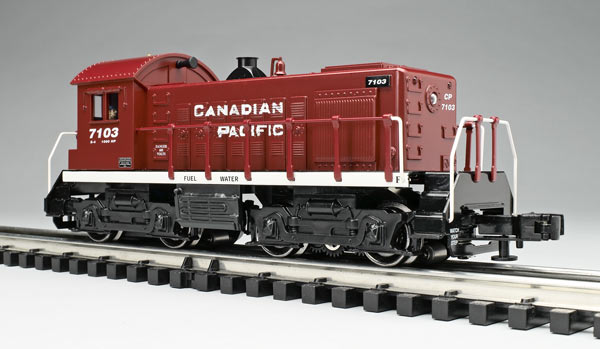

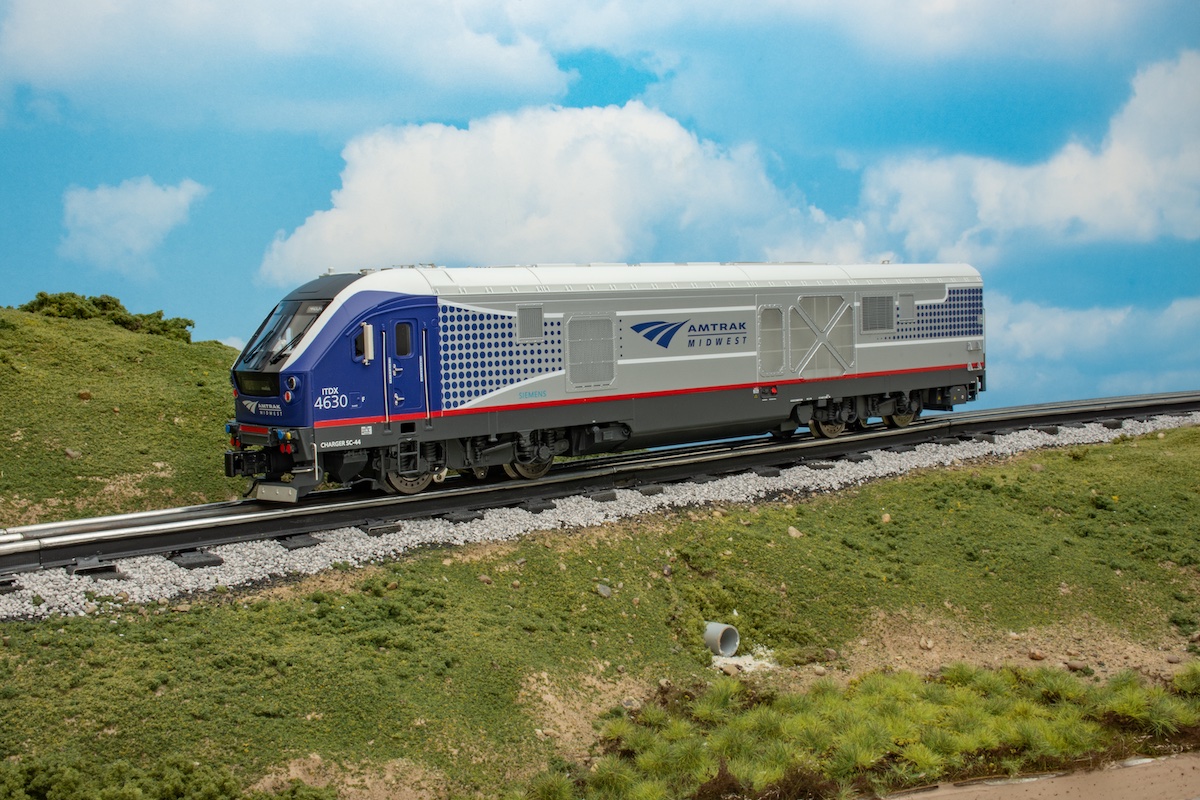
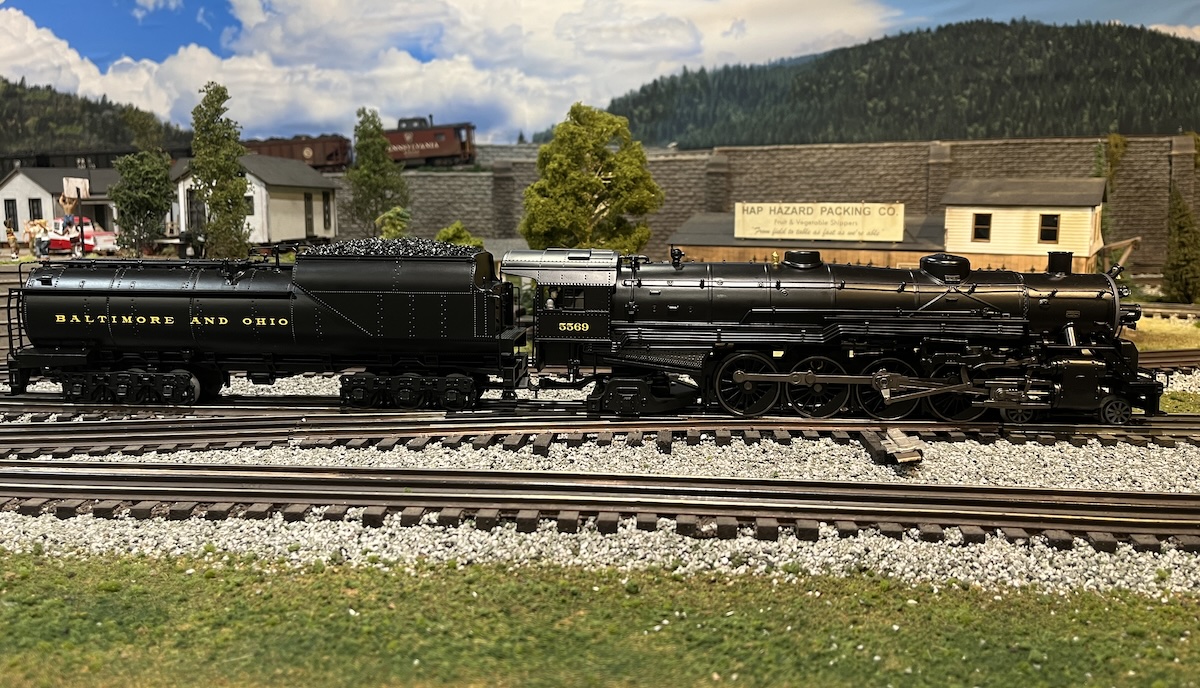
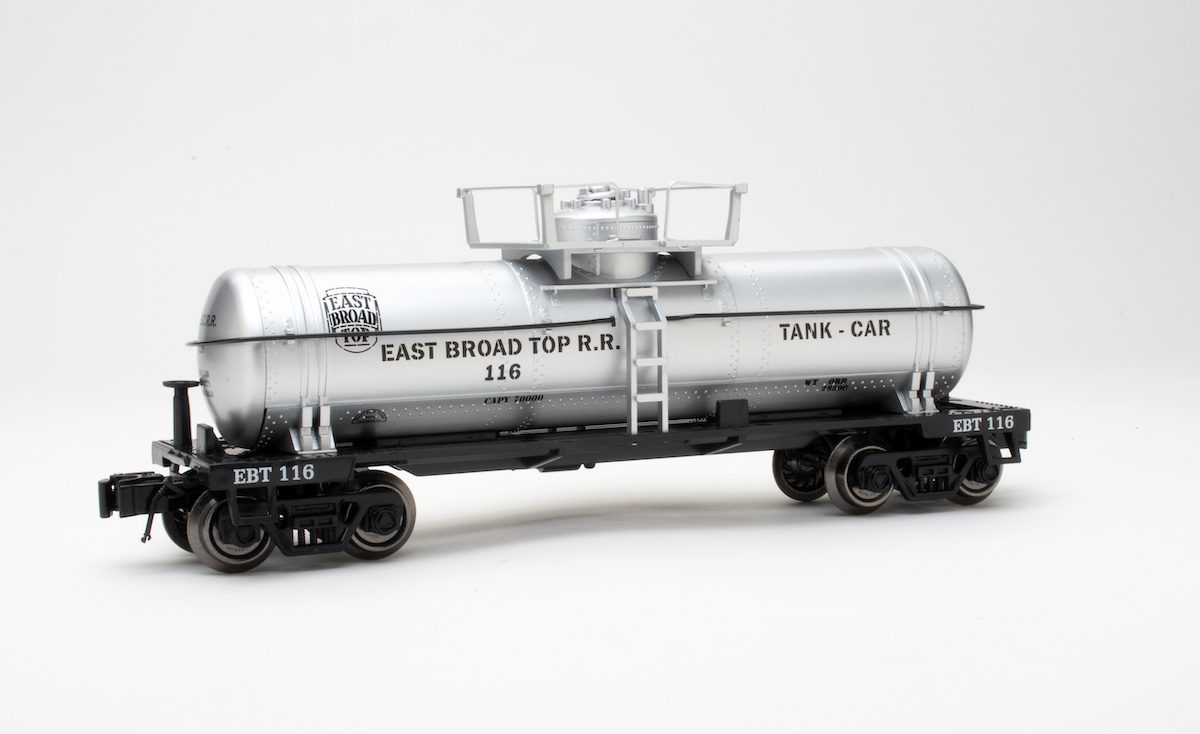
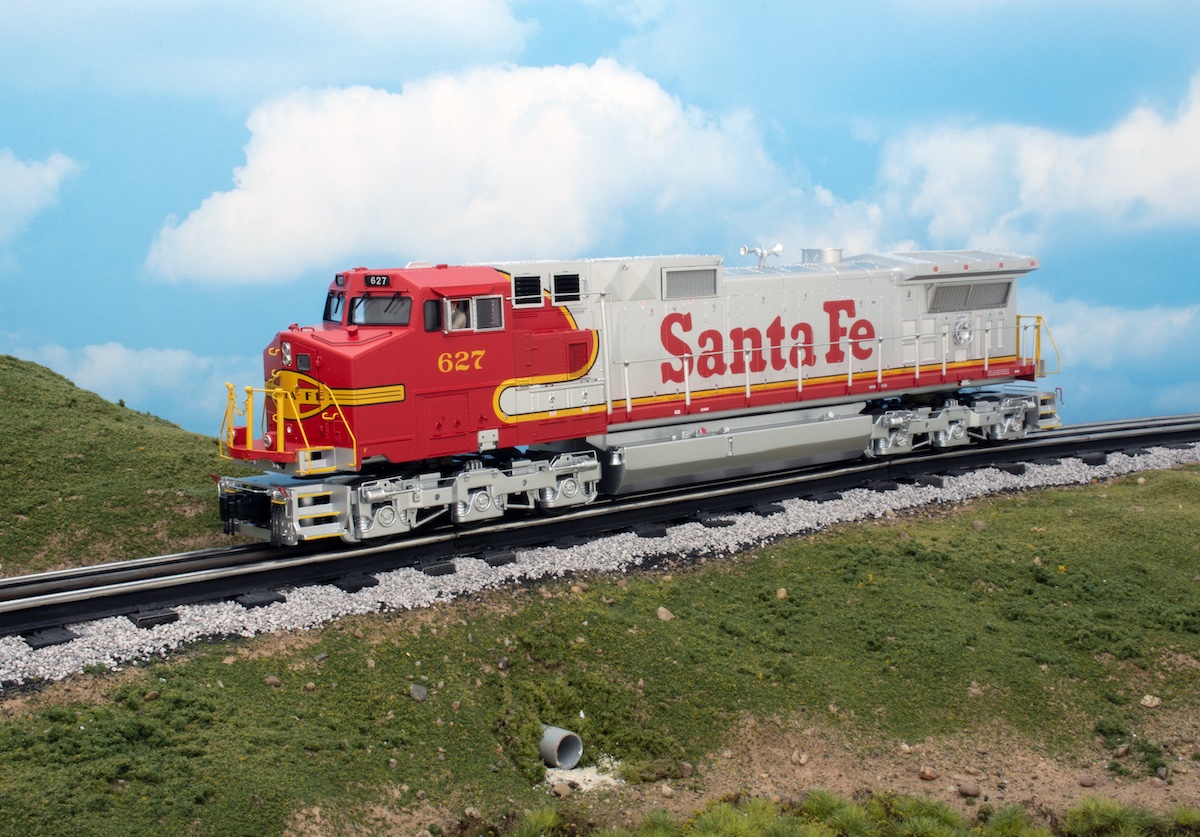




I purchased a Long Island RMT S-2. This unit can not be beat for the price! It looks good and runs well too, and lets not forger the directional lighting and marker lights. I'll add one thing to Tony from oregon remark . . . if this thing is too toy like, then you need to change scales (one that has 2 rails rather than 3). In the past I spent too much money on expensive locomotives. I now have much more FUN running less expensive locomotives from RMT and Williams by Bachmann.
I have found RMT to be a great option and when I call the owner answers! Bob's reviews on their products sold me. I have now 3 engines operating and 2 on order.
I'd like touy one providing I can get a good price on it. To me the list price is way too high.
I purchased an RMT S-2 with Jersey Central markings. I feel Bob is right on with his comments and I'm also pleased with the engine as well as the matching caboose for the price. It pulls well and looks fine on my rails.
I would like to know when the S-2 switchers were used on railroads. When and if they were used on the Pennsy. Anybody?
Not everyone can afford to line their RailRax shelves with $400+ locomotives. If the engine is too toyish for anyone, they simply don't have to buy one. For those who may have a better handle on their discretionary spending, then this little engine may be just what they're after. I think the review is adequate or better.
I have bought four Beeps as a result of Bob's Train Box reviews. I now plan to purchase at least one Alco S-2.
Hey, Bob! For a guy who complained about how the crew would get into a Lionel Post War GG-1 or recent remakes, why no caveat with no forward windshield for the crew to see where the heck they are going on this Alco S-2? Of all the basic details to expect, a clear windshield should be one of them. Otherwise, it is way too toyish for most of us and certainly way more important than a strobe regarding realism. PG